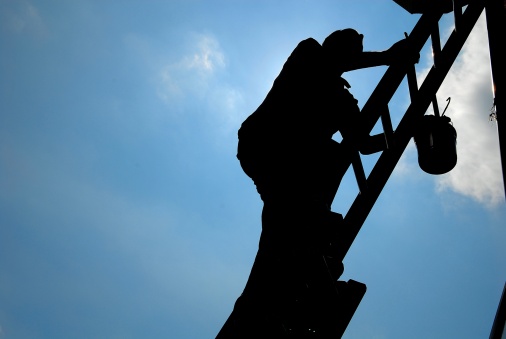
Employers have a duty to protect the health and safety of workers in the workplace. As part of that duty, employers must supervise all contractors to ensure that they comply with the OHS laws and don’t endanger workers’whether the employer’s or the contractor’s. And at multi-employer worksites at which there’s a prime contractor or constructor, the prime contractor or constructor must supervise the other contractors on the job. If it doesn’t and a contractor commits a safety offence, it could be held liable. That’s what happened to a prime contractor in BC.
[box]Prime Contractor Failed to Properly Supervise Painting Contractor[/box]
At a residential construction site, a painting contractor and one of his workers were injured in a fall from a ladder on a roof. Neither was wearing fall protection. The prime contractor for the site was issued an administrative penalty for OHS violations and appealed, arguing that the painting contractor was at fault and it had exercised due diligence to ensure the contractor complied with the OHS laws.
The Tribunal disagreed. The issue wasn’t whether the prime contractor was directly at fault for the painting contractor’s OHS violations but whether it had in place at the worksite appropriate systems and procedures to ensure contractors complied with their safety obligations under the OHS laws. To fulfill this duty, a prime contractor must have both a generally effective system in place as well as specific systems relevant to the particular workplace and contractor, said the Tribunal. And a prime contractor can’t merely assume that contractors will work safely; it must proactively ensure such safe work takes place.
Here, the prime contractor had a general oversight system, but failed to effectively oversee this specific worksite and the painting contractor. It gave the painting contractor an orientation and explained what his duties were. But it didn’t otherwise supervise him. The prime contractor assumed that the painting contractor would comply with his obligations but didn’t demand to see any of the basic features of proper safety planning from him relevant to the worksite, noted the Tribunal. In addition, the prime contractor knew that the painting contractor was attending the worksite at irregular and unscheduled hours, without contacting the site superintendent and thus without direct supervision.
The Tribunal explained that because contractors aren’t always motivated to comply with their safety obligations, multi-employer jobsites place an added supervisory duty on the prime contractor, who’s in the best position to control and ensure safety on such jobsites. So although the painting contractor was obviously at fault, the prime contractor’s failure to adequately supervise him in all the circumstances reflects, in turn, a breach of its own safety obligations, concluded the Tribunal [WCAT-2013-03358 (Re)].
[box]SOLUTION: Ensure Contractors Are Adequately Supervised[/box]
The basic lesson from this case is that whether you’re an employer, prime contractor or constructor, you can’t assume that contractors will comply with their safety obligations. You must adequately supervise them while they’re working for your company to ensure that they do what they’re required to do. To ensure that you adequately supervise contractors:
Tailor the level of supervision to the level of hazard. All work doesn’t require the same level of supervision. That is, the greater the hazard, the greater the need for supervision of contractors. For example, particularly hazardous work, such as jobs involving confined spaces or work being done at heights, requires more direct supervision, such as having someone from your company physically monitor the contractor in the field. But for less hazardous work, you can usually rely on indirect supervision, such as requiring daily copies of all risk assessments conducted by the contractor.
Look for safety violations and infractions. When supervising a contractor’s work, you shouldn’t merely ensure that the workers are doing the job they were hired to do. It’s important that you also identify any violations of the OHS laws and of your company’s or the contractor’s safety rules and procedures being committed by them’and then take appropriate steps in response. For example, if your site superintendent sees a roofing contractor’s workers on a roof without appropriate fall protection, he should immediately speak to a supervisor for the roofing contractor, advise him of the infraction and require those workers to use proper PPE. And such infractions may also signal that this contractor needs more direct and frequent supervision than others.
Insider Says: For more information on dealing with contractors, go to our Contractors Compliance Centre.
SHOW YOUR LAWYER
WCAT-2013-03358 (Re), [2013] CanLII 80101 (BC WCAT), Nov. 29, 2013


Leave A Comment